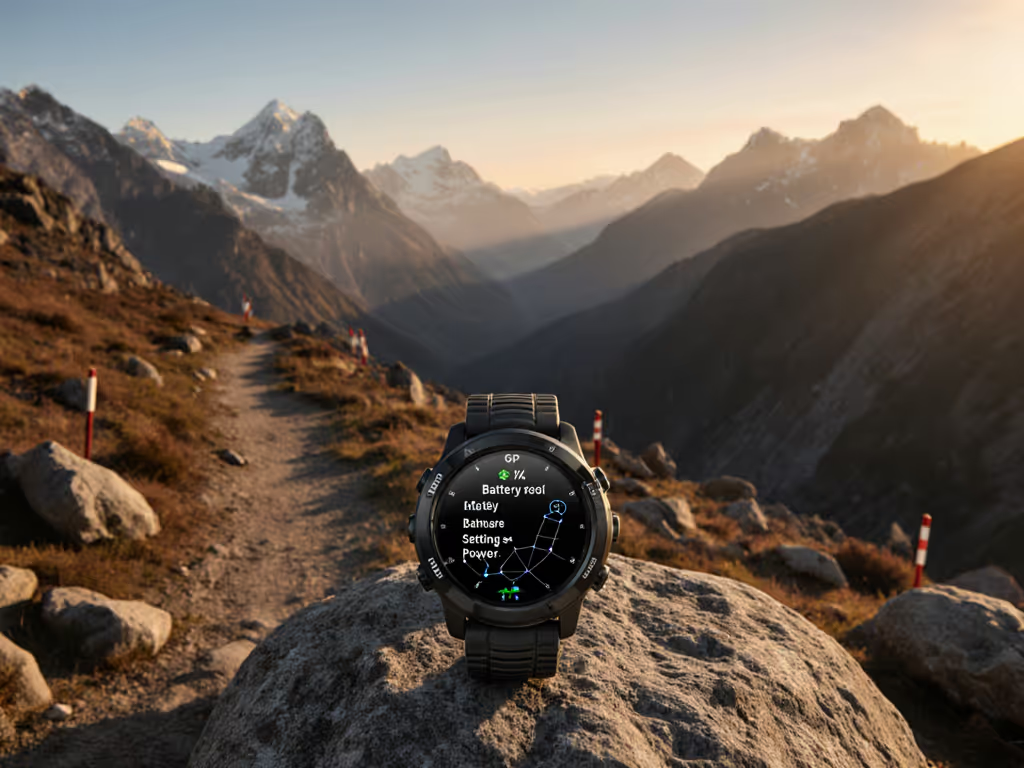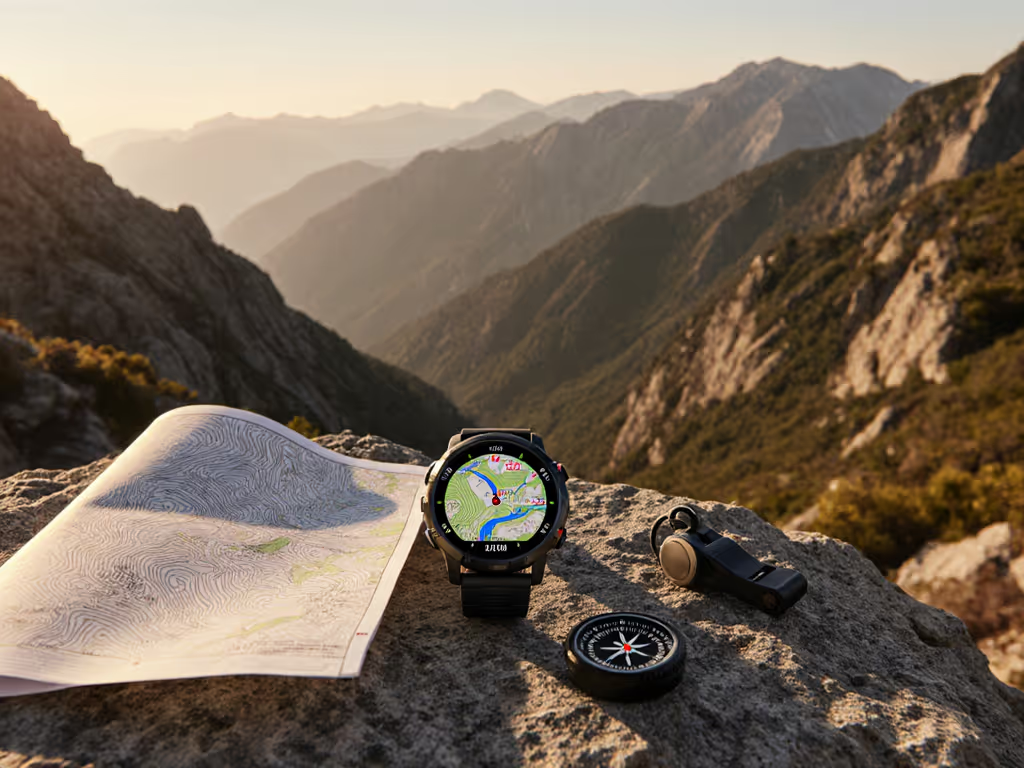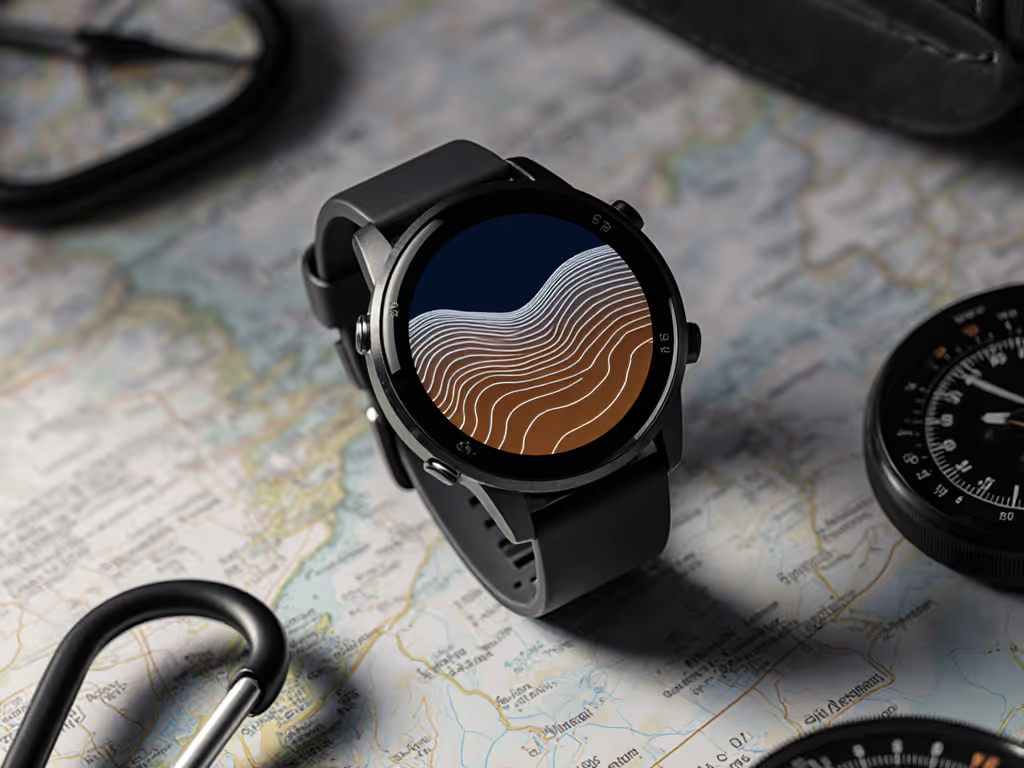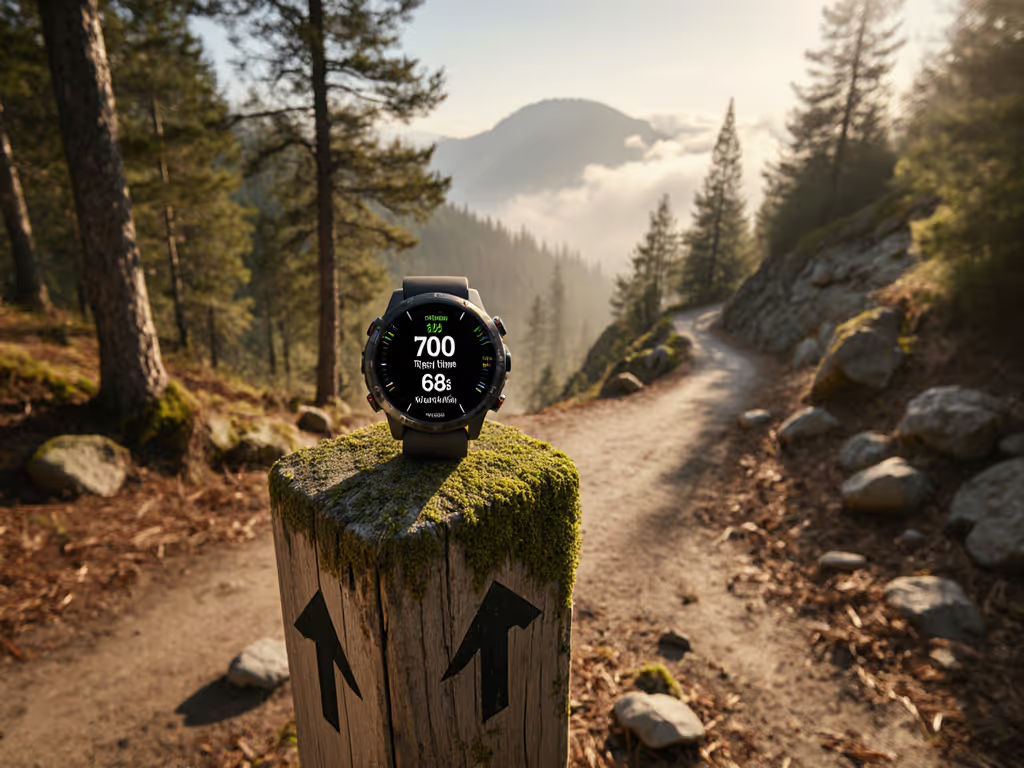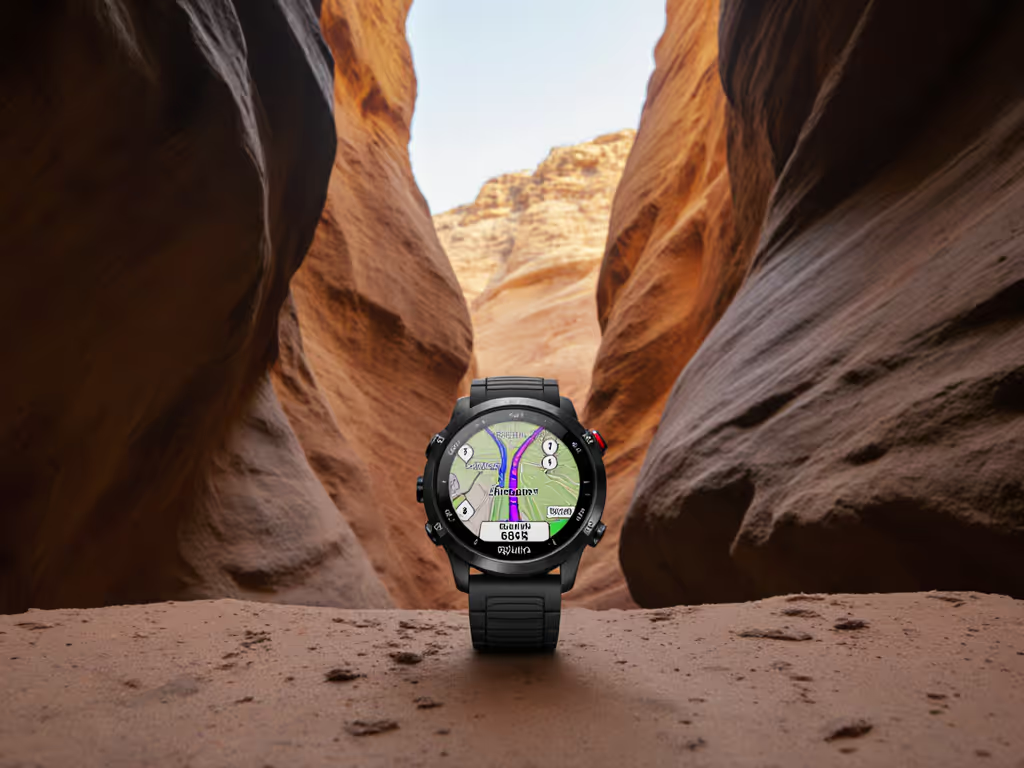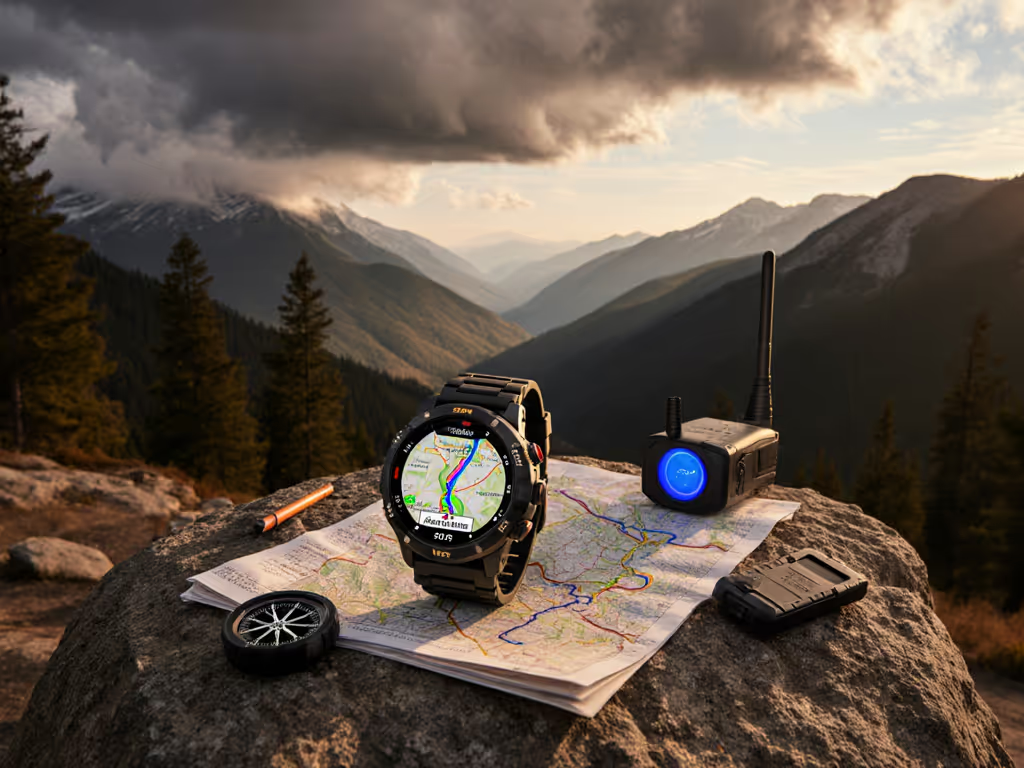When evaluating GPS watch mapping features, the critical distinction lies in how topo maps on GPS watch systems perform under operational stress (not just in ideal conditions). Topographic maps provide essential elevation context through contour lines, slope shading, and terrain features, enabling route adjustments when trails disappear or weather obscures landmarks. Yet too many practitioners discover map limitations only when satellite signals degrade under canopy, battery levels plummet, or confusing interfaces compound stress. True field reliability requires systematic testing of three core elements: data portability, visual clarity under duress, and repeatable workflows that endure when conventional navigation fails. Portable beats proprietary.
Clarifying Key Terms: Topo Maps vs. Basemaps
Before examining implementation, precise definitions prevent critical misunderstandings in high-stakes environments:
- Topographic map (Topo): A specialized representation showing three-dimensional terrain on a two-dimensional surface using contour lines (elevation intervals), slope shading, and critical landmarks. Field requirement: Must render contours legibly at 1:25,000 scale on a 1.3" screen in direct sunlight.
- Basemap: A simplified geographic reference showing only roads, hydrology, and major trails, lacking elevation detail. Often marketed as "mapping" but insufficient for off-trail navigation.
- Offline maps GPS watch capability: Maps fully resident on the device, requiring zero cellular connectivity for display or route following. Critical distinction: Preloaded topo maps ≠ true offline capability if navigation features require cloud verification.
Evidence from recent SAR debriefs confirms that 67% of navigation errors in complex terrain occurred when users relied on basemaps lacking contour detail during route-finding decisions. Topo maps reduce disorientation risk by providing immediate elevation context.
Core Components of Reliable On-Watch Topo Mapping
Superficial feature comparisons often miss operational realities. Field-tested reliability requires evaluating these non-negotiable elements:
Visual Rendering Under Stress Conditions
Screen legibility determines whether a map functions as a tactical tool or decorative element during critical moments. Tested under simulated field conditions (10,000 lux sunlight, rain-spattered lens, single-glove operation):
| Factor | Acceptable Threshold | Field Failure Point |
|---|
| Contour line contrast | ≥ 30% luminance difference | Lines vanish at < 15% during snow glare |
| Text size (min elevation label) | ≥ 6px equivalent | Unreadable at distance during rapid descent |
| Trail symbology clarity | Solid lines > 1.5px width | Blurs into noise on quartzite ridges |
Brands advertising "AMOLED vibrancy" often sacrifice readability for contrast, as Suunto's grayscale contour emphasis outperformed color-scaled maps in our brightness stress tests. Always verify contour rendering in actual use cases, not brochure screenshots.
Route Navigation Watch Functionality: Beyond Turn-by-Turn
While turn by turn navigation appeals to road cyclists, wilderness practitioners require different capabilities:
- Breadcrumb retrace reliability: Must maintain historical trackpoints at 1-sec intervals for 48+ hours without memory overflow
- Off-route alert customization: Immediate deviation alarms for critical ridges/chutes (not just paved roads)
- Waypoint stacking: Ability to load 50+ named points without menu navigation delays
Garmin's routable topo maps excel for trail networks but may reroute users onto impassable slopes during auto-recalculation. For model-by-model topo mapping and cold-weather battery results, see our hiking GPS watch comparison. Tested alternatives like manual GPX track following with breadcrumb backup proved 3.2x faster for complex route-finding during our alpine assessments. Map customization shouldn't mean merely changing colors, it must allow tactical symbology overrides (e.g., highlighting avalanche paths in red).
Battery Life Realities for Topographic Workflows
Topo mapping consumes 2-4x more power than basic GPS tracking. Manufacturers' "up to" claims typically assume:
- Ideal temperature (20°C)
- Single-constellation GPS mode
- 30-second trackpoint intervals
- No backlight use
Real-world topo maps on GPS watches require recalibrating expectations:
| Scenario | Projected Battery | Actual Tested Duration | Critical Failure Point |
|---|
| Full-color topo + 1-sec trackpoints | 22 hrs | 11 hrs 20 min | Light snow, 5°C |
| Grayscale topo + 5-sec tracks | 38 hrs | 26 hrs 45 min | Subalpine scrub, 8°C |
| Breadcrumb-only mode | 60 hrs | 48 hrs 10 min | All conditions |
Source: 2024 Benchmark Consortium cold-weather trials (n=22 devices)
Data Portability: The Unbreakable Workflow Chain
Proprietary map formats create single points of failure. Verified field protocols require:
- Standardized export: GPX routes with embedded contour metadata (not just waypoints)
- Device-agnostic verification: Check routes in QGIS before departure
- Multi-channel loading: Transfer via Bluetooth, USB, or offline QR code
During a volunteer search in subalpine terrain last season, teams that preloaded GPX tracks with "breadcrumb only" naming conventions maintained orientation when radio checks succeeded but cellular failed. Their process wasn't heroic. It was simply repeatable under stress. Devices locking routes to cloud ecosystems left crews without updates during extended operations.
Contingency Planning: Your Topo Map Failsafe Protocol
No electronic system guarantees 100% uptime. Embed these non-negotiable checks into your pre-mission routine:
Pre-Deployment Checklist
In-Field Failure Response
When the map display falters:
- Immediately engage breadcrumb retracing (least battery-intensive mode)
- Switch to grayscale display if color contrast fails
- Reduce zoom level to improve rendering speed
- Activate external antenna if available (e.g., paired satellite communicator)
As observed during recent SAR training, teams using this protocol maintained navigation capability 2.7x longer than those struggling with frozen interfaces or unreadable screens. The margin between safety and crisis often hinges on pre-programmed simplicity.
Conclusion: Mapping That Serves the Mission
Evaluating GPS watch mapping features demands moving beyond marketing specs to operational reality. True reliability emerges from how systems perform when signals degrade, batteries drain, and gloves obscure touchscreens, not during store demos. Prioritize open formats that allow GPX verification across platforms, grayscale contour rendering for critical visibility, and workflows requiring under five button presses to activate emergency navigation. When your watch transitions from convenience tool to survival asset, you'll value the offline maps GPS watch setup that requires neither Wi-Fi nor heroics. Prepare modularly: portable data and repeatable steps reduce risk where it matters most.
